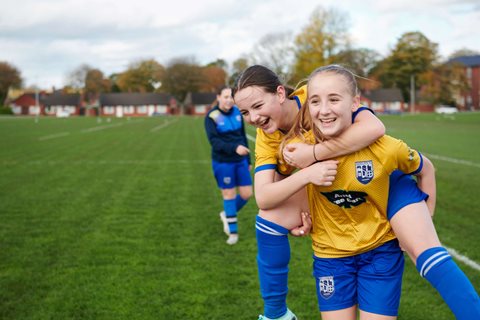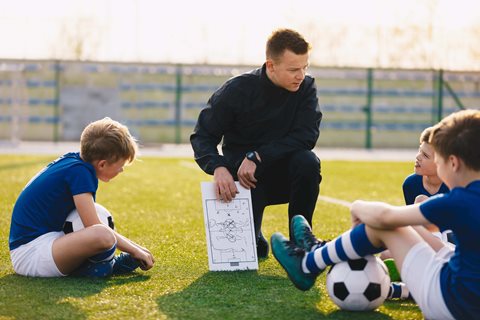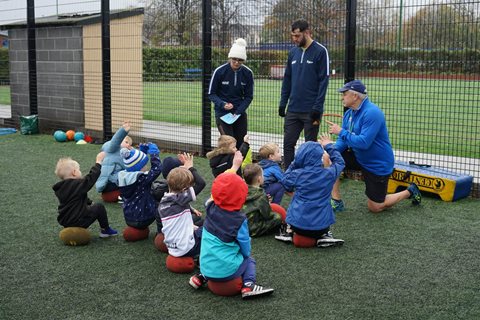Our cookies
We use essential cookies to make our website work smoothly for you. To make sure we're always improving, we'd like to use analytics to track how people use the site. We won't set non-essential cookies unless you give us permission. You can find more information about all the cookies we use in our Privacy and Cookie Policy.
Some cookies are a must for our website to function properly. If you turn off essential cookies, it may affect how you experience our site.
The non-essential cookies we use help us understand how you use our website and make improvements to enhance your experience.
How to Teach and Coach Swimming so Children and Young People Have a Splashing Time
Expand your toolbox of child-centred techniques and learn how to apply a child-first approach to help every young swimmer learn, develop, and thrive. Head Coach of London Borough of Hounslow Swimming Club and former international swimmer Lisa Graham shares her top tips for teaching and coaching children swimming.
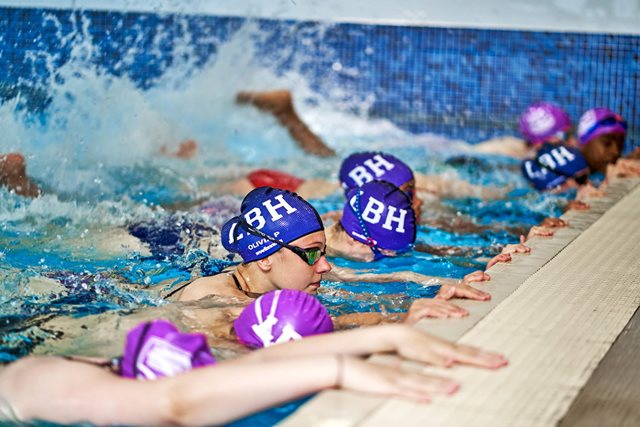
Included in this article:
- JOURNEY: What makes a good swimming coach or instructor?
- CHOICE: Take the plunge… and get creative
- JOURNEY: How do you teach a beginner to swim?
- Swim England’s core aquatic skills
- When to introduce the different strokes
- JOURNEY: How do you coach more advanced swimming?
- Top tips for coaching all abilities
- How to build confidence in the water
- How to keep young swimmers safe
- FREE Resource: 6 Top Tips for Child-first Coaching
by Blake Richardson
Whether you’ve decided to take the plunge as a swimming instructor, or you already teach/coach swimming to kids, to succeed in helping children develop the key skills needed to become confident, competent swimmers, it is imperative that you respect some golden rules.
- Make sessions games-led and full of fun. That is the most effective way for young children to learn new skills.
- Whether teaching or coaching, value the child’s voice. By really getting to know your swimmers, listening to their wishes, and harnessing their vivid imaginations, you will quickly build rapport, earn their trust, and have their undivided attention.
- Give children a choice: seeking their creative input by involving them in decision-making and giving them freedom and control is a simple way to engage, motivate and create a stimulating learning environment.
- Adopt a holistic approach to your swimmers’ development. Allowing children to shape their experience of swimming will develop a wide range of transferable skills for life that help them grow as people as well as performers.
- And finally, remember that children are not machines, they are human beings. Taking a person-centred approach to coaching children how to swim should always take precedence over a mechanical approach to teaching and developing swimming skills.
Follow these golden principles of child-first coaching to guarantee your swimmers have a splashing time.
It is important to differentiate between a SWIMMING INSTRUCTOR, who teaches young people water safety and aquatic/swimming skills, and a SWIM COACH, who prepares and develops swimmers for a competitive performance pathway, if they wish, at an appropriate swim club.
What makes a good swimming coach or instructor?
Swim England-qualified Swimming Coach/Instructor and former international swimmer Lisa Graham’s motto is: Remember there is a person in front of you.
Every one of her swimmers is a person first, and a swimmer second.
Take time to understand more about the children you teach or coach; their family life, school life, hobbies and interests, and how swimming fits into their life.
You’ve got to really understand what makes the person in front of you tick to get the best out of them and be able to enhance their enjoyment of the sport,” says Lisa.
This holistic approach to your teaching or coaching will help you develop the whole child, not just their swimming, by enabling you to decipher each swimmer’s individual needs, wants and desires.
A one-size-fits all approach to coaching doesn’t work, because each person’s motivations and aspirations are different.
“It’s important for your swimmers to feel that their other interests and any other sports they play are valued by their coach,” adds Lisa.
Observe them from the moment they walk through the door. Simply asking about their day will give you a benchmark of how they are going to respond in the session.
Remember that a lot of great coaching takes place outside the pool, not just in the water.
Take the plunge… and get creative
When teaching swimming, unleash your and your children’s creativity by co-designing imaginative games.
When the walls of the swimming pool echo with the sound of children’s laughter, you know you have created a truly immersive experience.
Even the most mundane of exercises can be magically transformed with a dash of imagination.
Take traditional swimming races to another level by creating underwater obstacle courses using weighted hoops and floating noodles. Swimmers will be buoyed by the opportunity to morph into mermaids or Aquaman as they move under, through or over the barriers.
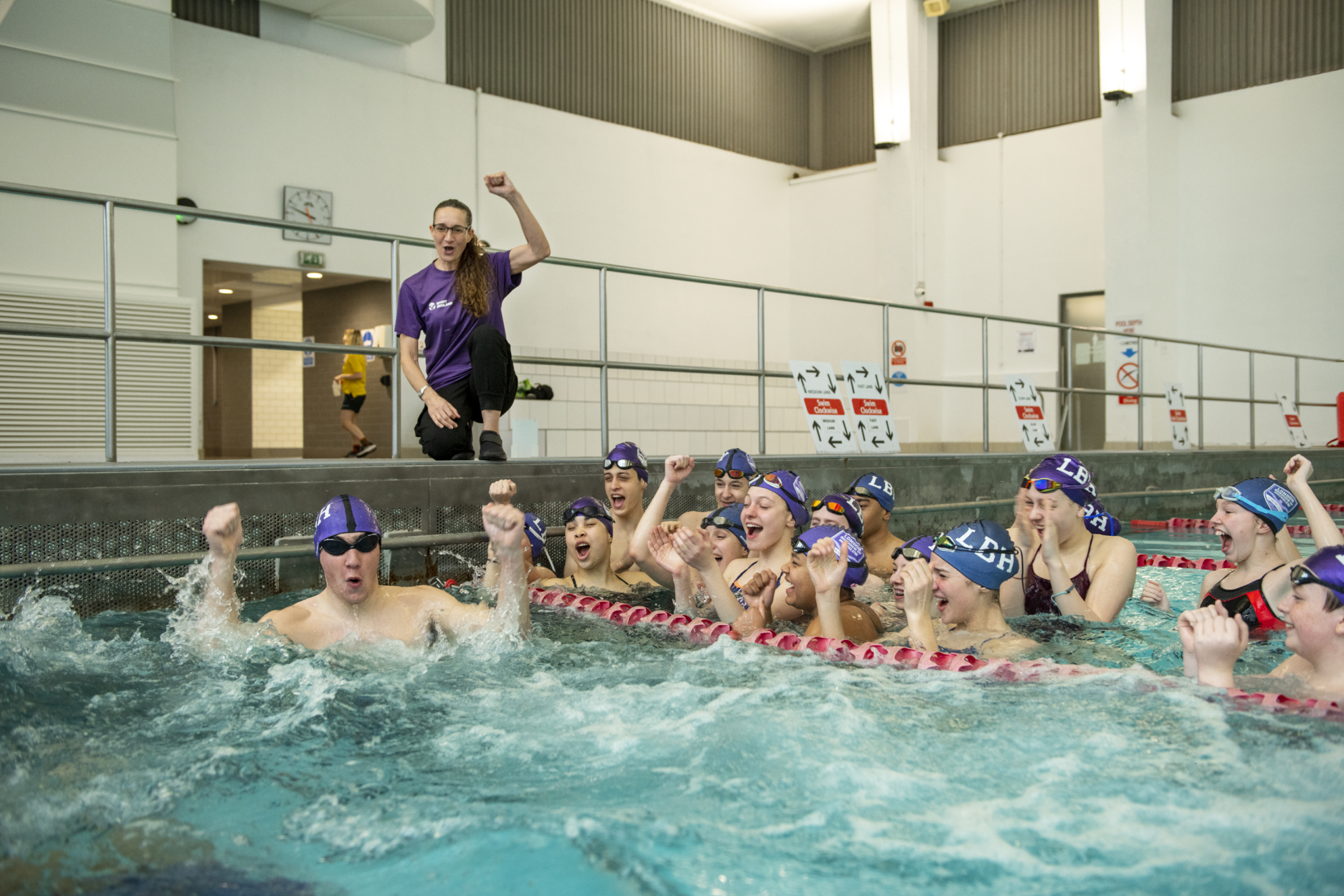
Encouraging swimmers to retrieve sinking objects is good fun. But creating a dreamscape where swimmers embark on a daring mission to recover treasure from the lost world of Atlantis is significantly more fun.
Any Star Wars fans in your club? Suddenly they are Jar Jar Binks duck diving down to the spectacular underwater city of Otoh Gunga on Naboo for the special key that… well, that’s for the children to invent the rest of the story!
Even better, they will be enjoying themselves so much it will have completely escaped their notice that they have been improving their swimming skills the whole time.
5 Top Tips for Child-First Coaching
Be the best coach you can be! Download our 5 tips to help you tap into your creativity and deliver great sessions.
5 TOP TIPS
How do you teach a beginner to swim?
Swim England’s Learn to Swim Programme forms the “cornerstone of curriculum swimming lessons in England”.
Divided into seven progressive stages, the Awards make up the core national syllabus of learning to swim for primary school-aged children.
Lessons teach the core aquatic skills, with swimming instructors keeping a written record of the progress of each child against the measurable outcomes required for each Stage.
“The swimmer should always be in the driving seat of their own progression,” explains Lisa.
You don’t move the child up a Stage just because it suits the instructor; the child only moves to the next Stage when they are confident and ready.”
Swim England’s core aquatic skills
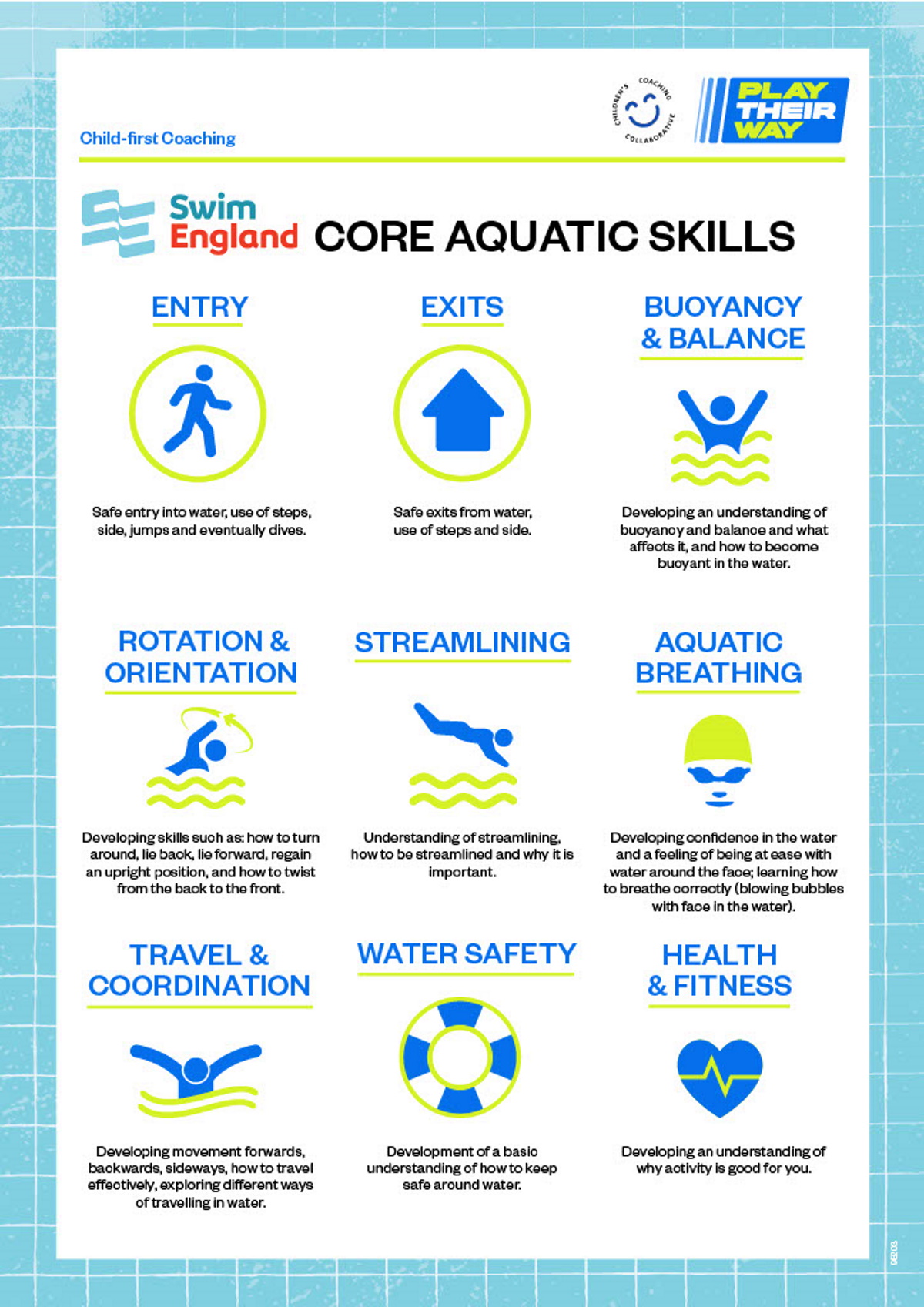
- ENTRY – safe entry into water, use of steps, side, jumps and eventually dives.
- EXITS – safe exits from water, use of steps and side.
- BUOYANCY & BALANCE – developing an understanding of buoyancy and balance and what affects it, and how to become buoyant in the water.
- ROTATION & ORIENTATION – developing skills such as: how to turn around, how to lie back, how to lie forward, how to regain an upright position, and how to twist from the back to the front and vice versa.
- STREAMLINING – understanding of streamlining, how to be streamlined and why it is important.
- AQUATIC BREATHING – developing confidence in the water and a feeling of being at ease with the water around the face; learning how to breathe correctly. i.e., blowing bubbles with the face in the water to exhale, face out of the water to inhale.
- TRAVEL & COORDINATION – developing movement forwards, backwards, sideways, how to travel effectively, exploring different ways of travelling in water.
- WATER SAFETY – development of a basic understanding of how to keep safe around water.
- HEALTH & FITNESS – developing an understanding of why activity is good for you.
When teaching swimming for kids, a key prerequisite of progress is putting the FUN into each of these fundamental aquatic skills.
Creating game-like scenarios that are relatable to children is a highly effective learning technique as they help children engage, and more easily understand the desired learning outcome.
Create a sea-life scene by asking swimmers which marine animals they would like to be and get them to mimic their movements in the water.
They might choose to be a seal, penguin, shark, or killer whale, and as they pretend to catch fish – twisting and turning as they hunt down their prey – they will be practising rotating in the water.
They might choose to be a jellyfish, improving their buoyancy and balance as they tread water; or an octopus, travelling down through the water using their feet (tentacles) and developing their aquatic breathing as they dive to the bottom of the pool.
Or perhaps they want to be a dolphin, gliding effortlessly through the water, and thereby executing the correct streamlined body position as they push and glide in stretch position, before wiggling from their chest and driving from their hips to also improve their travel and coordination.
Encourage children to delve into their own imagination and their own experiences of what they have seen on television, on holiday, or on visits to an aquarium. It’s about choosing scenarios that are easily relatable to children.”
When to introduce the different strokes
You do this from the outset. Every stroke, even the butterfly, can be introduced to beginners.
The dolphin kick is a core element of the butterfly stroke – where your legs are extended behind you and move up and down in unison. Demonstrate to the children and ask them to channel their inner dolphin.
Arm movements used in the butterfly stroke and mastering effective undulation will be developed later, but it is important children have the foundational skills in place from an early stage and begin to develop muscle memory.
Once again, analogies are an effective way to promote learning when introducing different strokes to beginners.
Using animal metaphors as a learning tool will help young children make important connections and speed up their learning.
Instead of explaining the mechanics of the breaststroke, tell children, “Today, we are going to swim like a frog.”
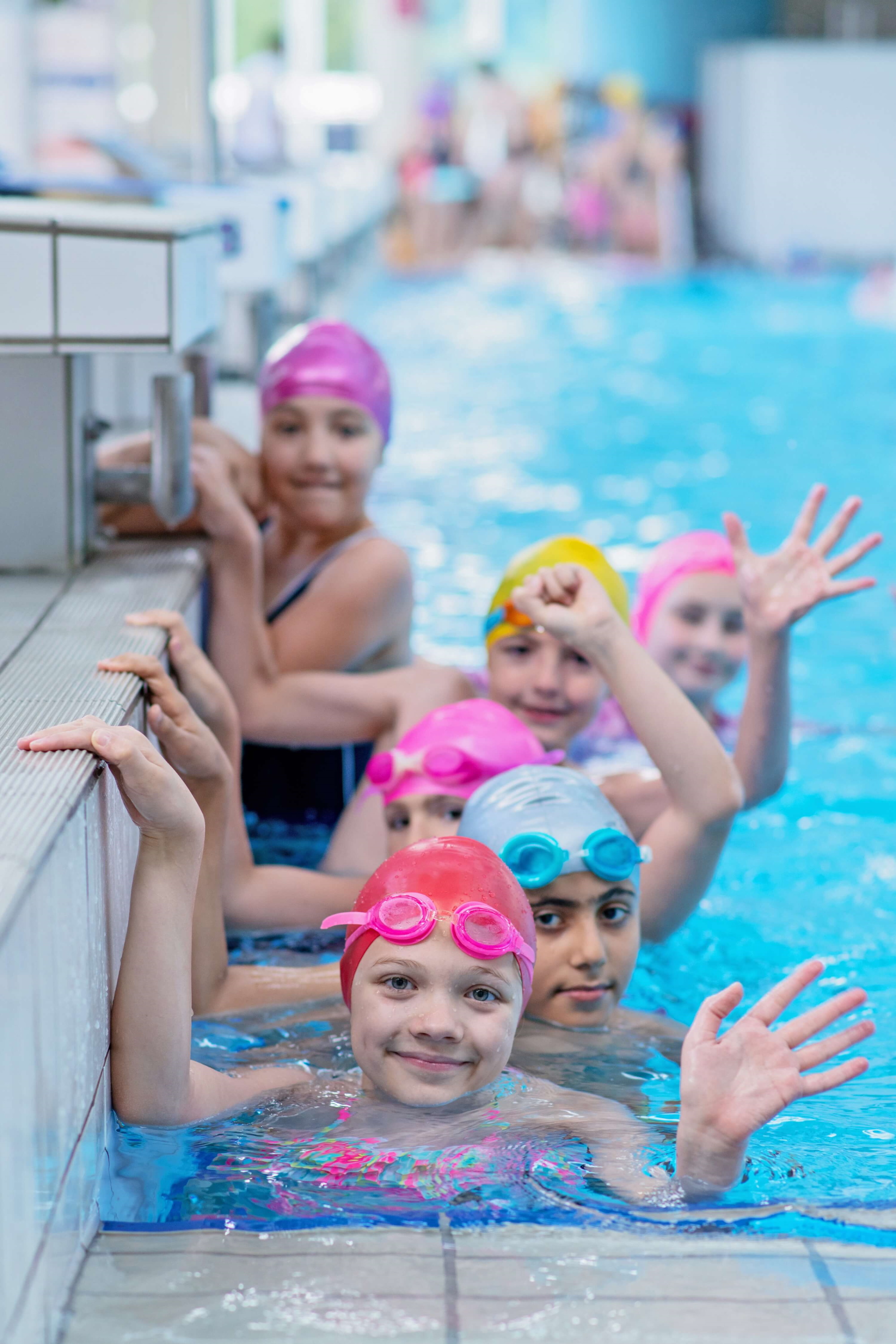
Children have seen how frogs jump and can use and translate that knowledge into practice in the water. So, when you tell a child to turn their feet out, bring their heels towards their hips and use their legs to perform a narrow-width kick back, they will be able to perform a basic breaststroke kick.
For freestyle, children could focus on being a polar bear. Here you are working on the underwater pull propulsion phase – the pawing action of the freestyle pull – and developing the skill of front paddle using the kicking action of the legs.
In summary, the more energy and enthusiasm you put into teaching children swimming, the more energy and enthusiasm you will elicit from your young swimmers.
So, if you want to make your classes unmissable, think like a child.
How do you coach more advanced swimming?
Even at advanced level, swimming is about enjoying the process of developing and enhancing skills.
Every session should be:
- Fun.
- Engaging.
- Stimulating.
- Varied.
- Challenging.
The aim of instructors/coaches is to create a positive environment where swimmers can feel safe, be themselves, focus on their own swimming during sessions, and enjoy being part of a group or team with a shared purpose of learning and improving in a holistic way,” says Lisa.
Instructors/coaches and swimmers should work towards clear aims and objectives, using SMART goals (Specific, Measurable, Attainable, Relevant, Timely) as a guide.
Swimmers should be encouraged to set their own goals, enabling them to take ownership of their own progression and be able to recognise their individual achievements – “an important skill that is transferable to the wider context in life," says Lisa.
For those swimmers who want to compete, it is important that the coach takes as much pressure off them as possible.
“I always say ahead of competitions: ‘Let me do the worrying and you do the thinking and racing’.
Since Covid, children and young people are under a lot of pressure to achieve academically, and are on an ever-evolving treadmill, so we have to make sure there is that balance and it’s not all about the results.”
Lisa tells her competitive swimmers that they will always have her unconditional support, regardless of the result.
“There is no such thing as a terrible swim. There is always some aspect of a race where you can draw a positive. Break down each element of the performance with them to help them find the positives.”
When coaching competitive swimmers, British Swimming have developed the Optimal Athlete Development Framework (OADF) to assist coaches and swim clubs to deliver a programme that equips their athletes with the skills and characteristics they need to achieve a successful performance pathway.
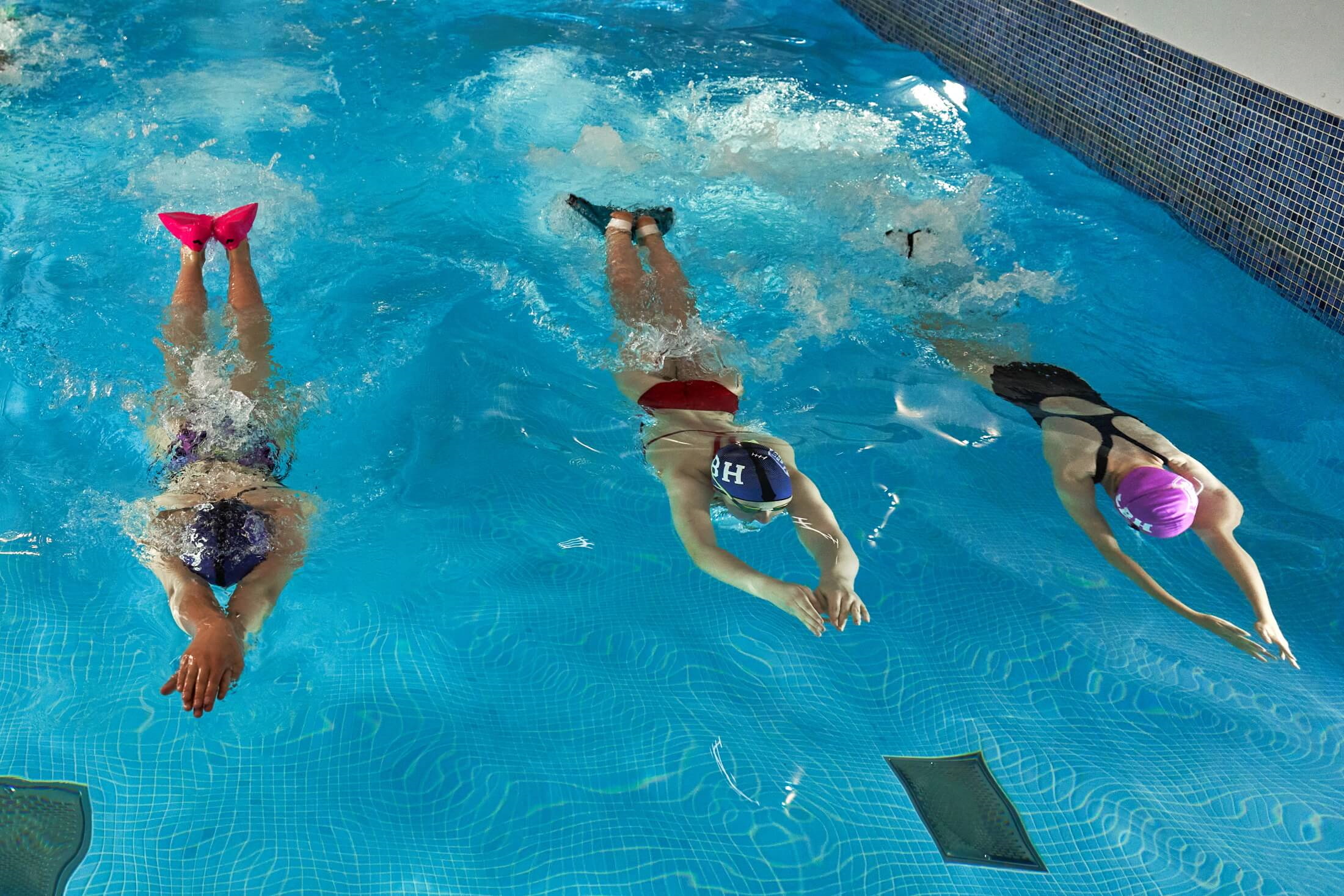
Top tips for teaching/coaching all abilities
Whatever level your swimmers are at on their aquatic journey, when teaching or coaching kids swimming, remember the following:
- Only focus on one or two teaching points per activity: “Children can get overwhelmed by too much instruction.”
- Ensure your instructions are clear and simple and that you deliver lots of positive praise and encouragement.
- Allow plenty of time for discussion and feedback, where swimmers are urged to share what they have struggled with and what they have particularly enjoyed.
- Always have a session plan and a scheme of work where you know what you have worked on in a previous session, and so you don’t miss out any content or training objectives. But be willing to adapt at any point.
- Always have a clear aim and objective for every session and explain to swimmers the purpose of why they are performing a particular exercise or technique.
- For novice swimmers, it’s advisable to give only one teaching point per lap so young swimmers can focus on one aspect of a skill at a time.
- Introduce and develop a skill/technique over a short distance. When competent, build the distance. This results in swimmers having a solid skill foundation on which to build and progress as competitive swimmers, should they wish, or move on to other aquatic disciplines.
When teaching/coaching swimming to kids, remember:
It is important for instructors and coaches to be aware of what other aquatic sports are available to young people local to them.
“Not everyone wants to swim competitively, and people may change their minds further down the line,” says Lisa.
“What is important is that every young person, whatever stage they are at, feels there are options for them to enjoy exercising, doing the sport that they enjoy.”
Teaching kids swimming: tips on how to…
Give children confidence in the water
If a non-swimmer or beginner is reluctant to place their face in the water to practise aquatic breathing, there is a useful training aid that will quickly build up their confidence to do so.
Egg flips (which resemble the planet Saturn; a brightly coloured round plastic floating toy with a rim around) are a novel way to teach the importance of correct breathing technique. They have become a favourite learning aid with children’s swimming instructors. Blow forcefully on the egg flip with your lips out of the water near water level, and over it flips to reveal a different colour on the other side.
Younger children will also enjoy trying to grab them as they bob around the surface.
The child progresses to blowing the eggs flips whilst walking around or using a buoyancy aid to travel with their feet off the floor, to build their confidence.
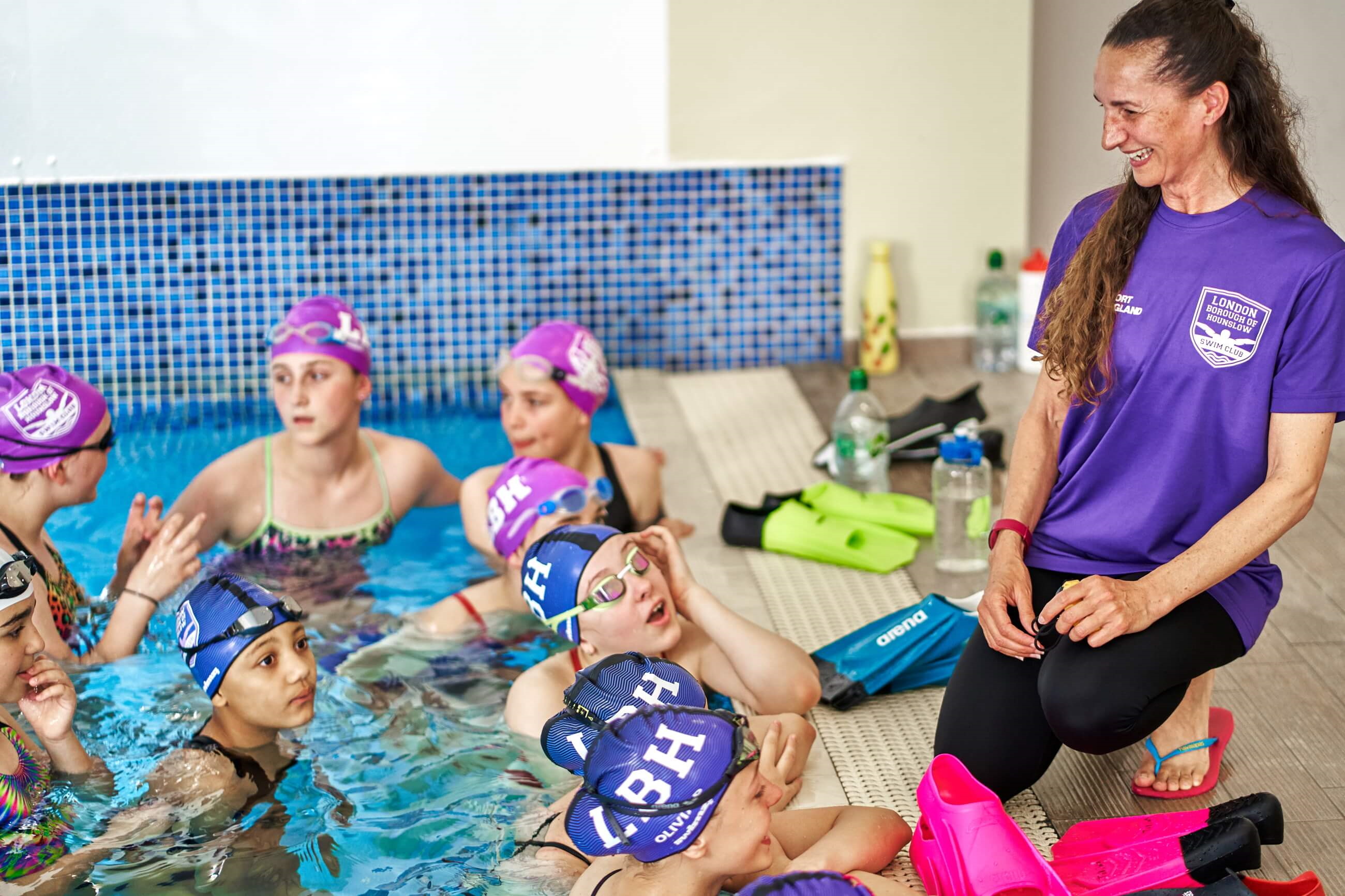
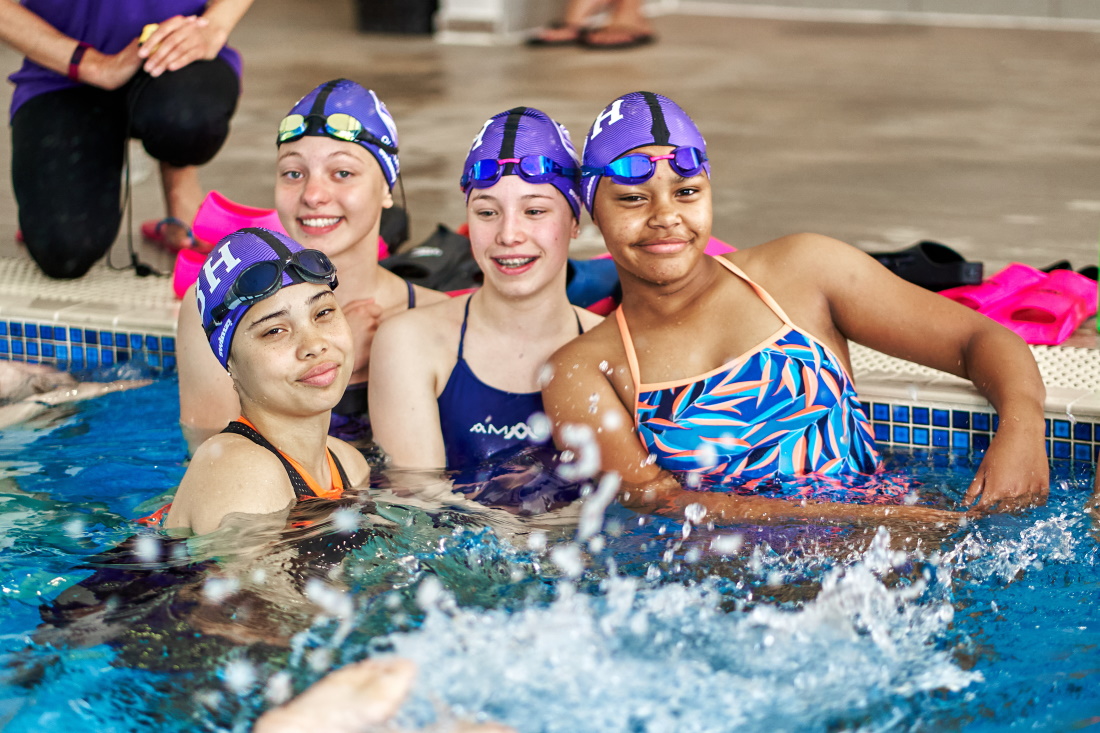
Once children become accustomed to the bubble-blowing pressure they need to use without water going up their nose and feel comfortable with their face in the water, they can experiment travelling with their lips in the water, progressing to lips and nose, then eyes, until their faces are fully submerged, and they are at ease while performing aquatic breathing.
Keep young swimmers safe
It is vital that non-swimmers and beginners remain within easy reaching distance of their instructors during the session.
One option is to have a qualified instructor in the pool who can provide support and perform demonstrations, and one instructor poolside to lead the session.
There is no need to support swimmers by hand; instructors can help swimmers use appropriate buoyancy aids, ensuring safety at all times.
Key safety points include:
- Make a point of reaffirming the safety rules before every session.
- Never take your eyes off your swimmers.
- If you are in the water with a young swimmer, never let them get behind you.
- When teaching group activities, ensure you can always see your swimmers, and they can see you. Have them arranged in a line or a semi-circle in front of you.
When a child is taught swimming and water safety skills competently, instructors and coaches have equipped them with a lifelong skill and enjoyment of water which can be passed on to their own families during adulthood,” says Lisa.
Next steps
To be a competent swimming instructor or coach, it is important to be on a continuous learning pathway.
We hope you found the article a useful addition on your journey to being the best swimming instructor or coach you can be.
Other resources you may like...
SHARE THE MOVEMENT
Help spread the word by sharing this website with fellow coaches!

